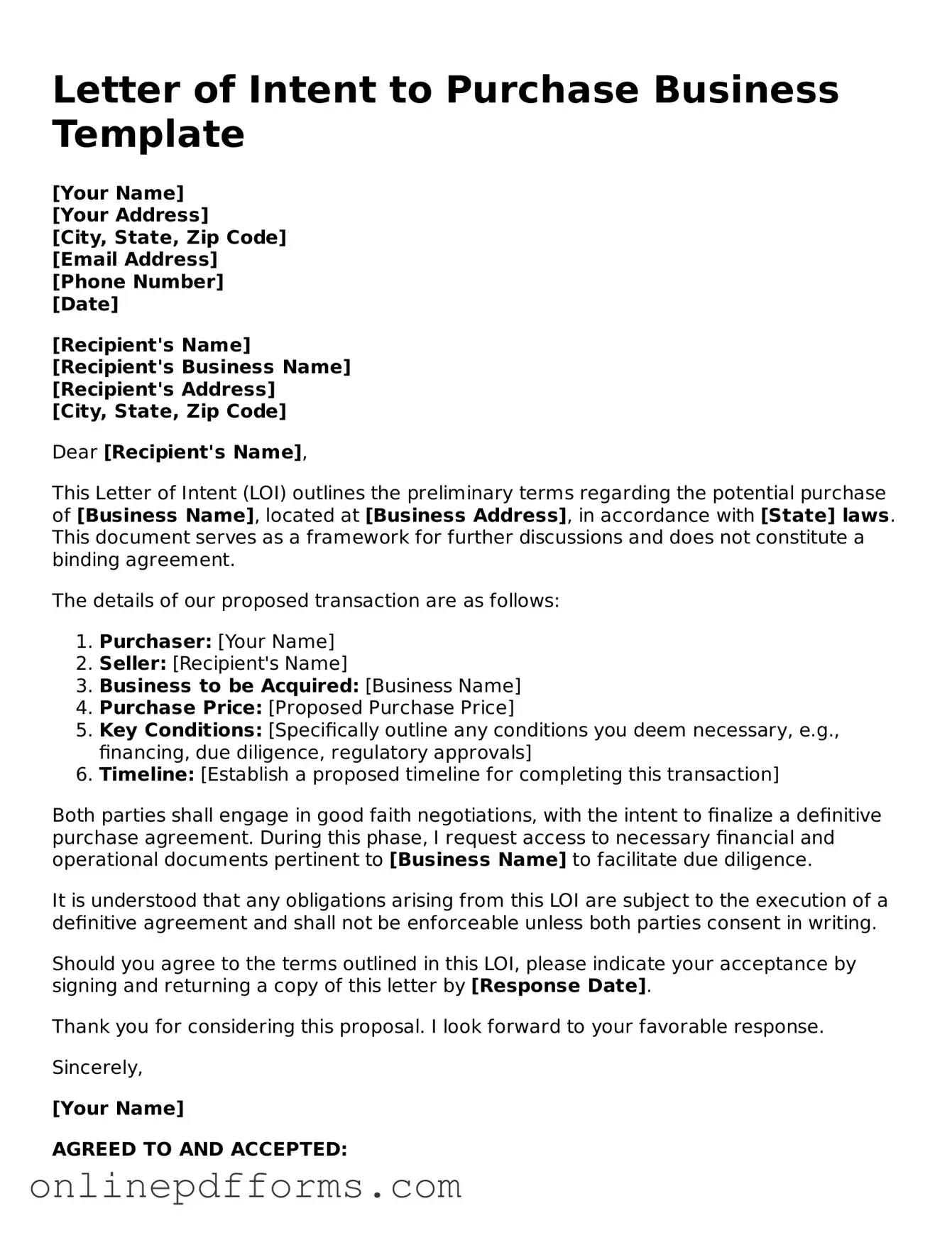The Letter of Intent (LOI) to Purchase a Business shares similarities with a Memorandum of Understanding (MOU). Both documents serve as preliminary agreements that outline the intentions of the parties involved. While an LOI typically focuses on the purchase of a business, an MOU can encompass a broader range of agreements. Each document expresses the desire to move forward with negotiations, setting the stage for a more formal contract. However, neither document is legally binding, which allows for flexibility during discussions.
Another document akin to the LOI is the Purchase Agreement. Unlike the LOI, which is a preliminary outline of intent, a Purchase Agreement is a legally binding contract that finalizes the terms of the sale. It includes specific details such as the purchase price, payment terms, and the responsibilities of both parties. While the LOI sets the groundwork for negotiations, the Purchase Agreement solidifies the deal, ensuring that both the buyer and seller have a clear understanding of their commitments.
A Term Sheet is another document that bears resemblance to the Letter of Intent. Like the LOI, a Term Sheet outlines the key terms and conditions of a potential transaction. It serves as a summary of the main points that the parties agree upon before drafting a more detailed contract. The Term Sheet is often used in various types of business transactions, including investments and mergers, making it a versatile tool in negotiations. It helps clarify expectations and can expedite the process of reaching a formal agreement.
Completing the Kansas Homeschool Letter of Intent is crucial for families planning to educate their children at home, as this form not only communicates the parents' intentions to the state but also ensures adherence to educational regulations. For more information on this process, you can visit hsintentletter.com/, where resources and guidance are readily available to support homeschooling families.
The Non-Disclosure Agreement (NDA) also shares common ground with the Letter of Intent. While the LOI expresses the intent to purchase a business, the NDA focuses on protecting sensitive information shared during negotiations. Both documents are crucial in the early stages of a transaction. An NDA ensures that proprietary information remains confidential, fostering trust between the parties. This trust is essential as they discuss the details of the potential sale outlined in the LOI.
Lastly, the Business Plan can be considered similar to the Letter of Intent in that it outlines the vision and strategy for the business. While the LOI expresses a buyer's intent to purchase, the Business Plan provides a comprehensive overview of how the business operates and its future goals. Investors and potential buyers often review the Business Plan to understand the viability of the business before proceeding with negotiations. Both documents are vital in the decision-making process, as they help clarify intentions and expectations.
